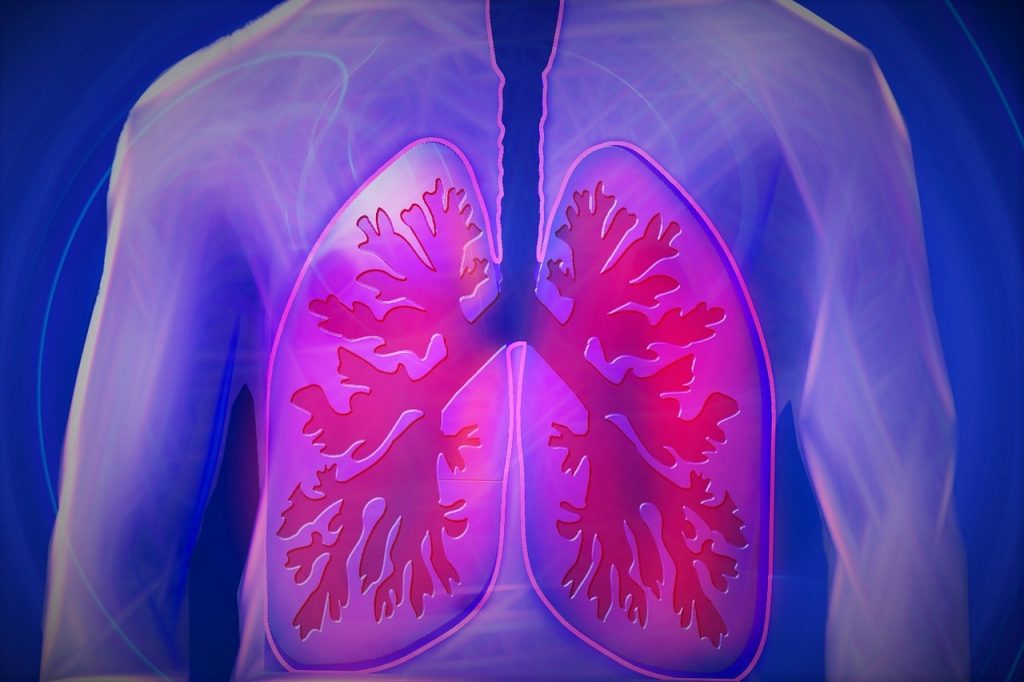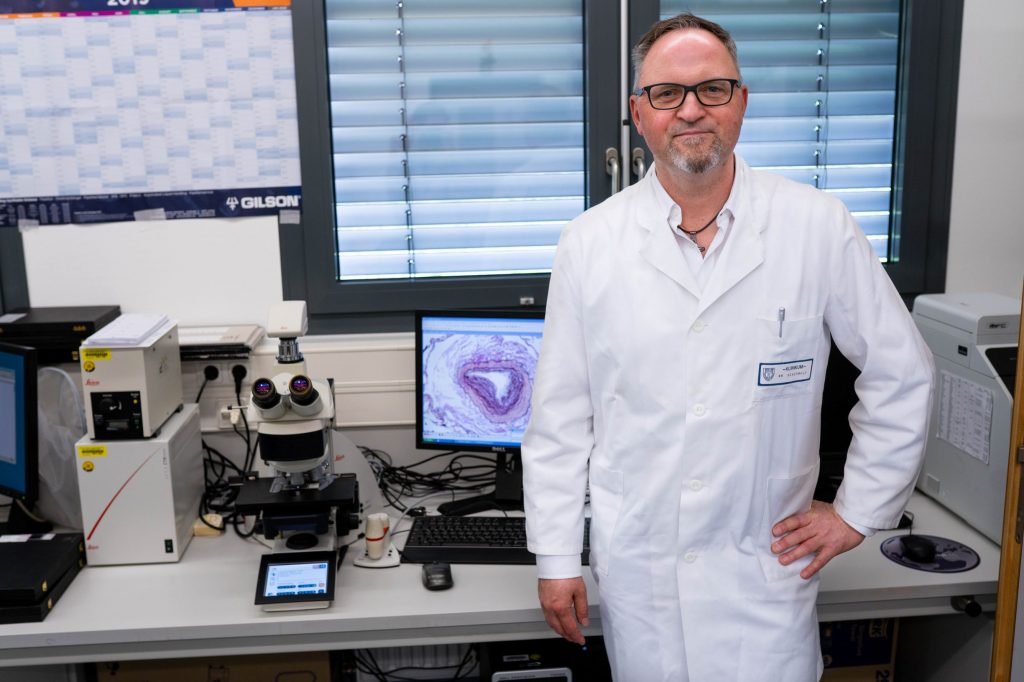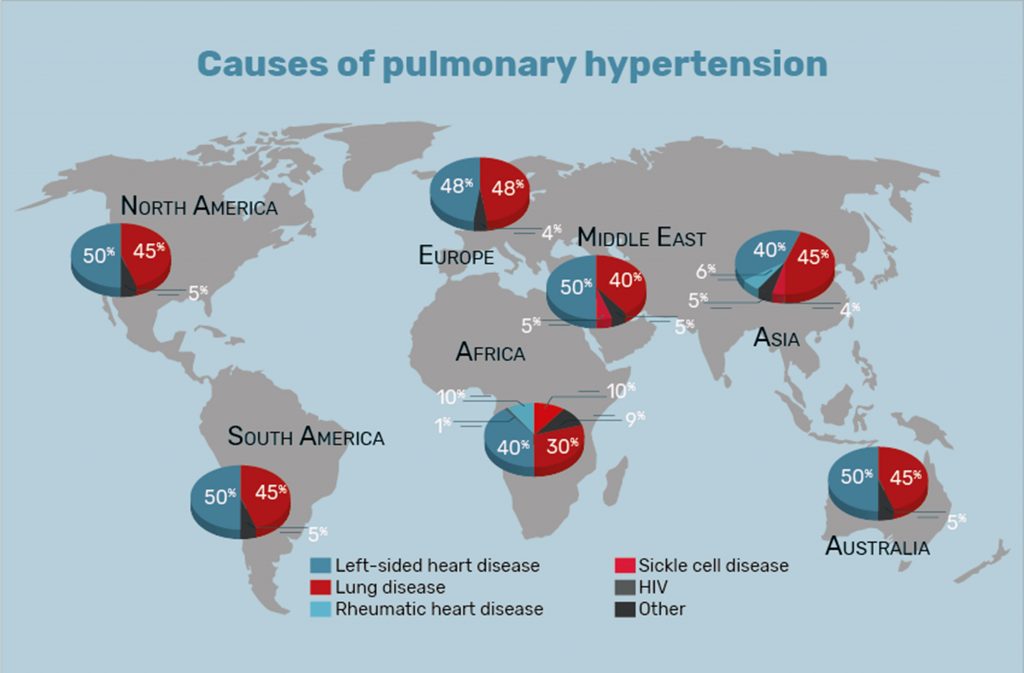Since pulmonary hypertension is incurable, people who are affected suffer from a constant shortness of breath. To aid these patients, a team of researchers at the German Center for Lung Research in Giessen, Germany, have investigated the brown algae extract Fucoidan to treat pulmonary hypertension — and found promising results.

When climbers reach a high peak, they struggle for air: This is because the oxygen level decreases. For patients with pulmonary hypertension, everyday life is a struggle for air – even slight effort pushes them to their limits. A few stair steps or short walks can feel like high-performance sports. “Pulmonary hypertension is characterized by abnormally high blood pressure in pulmonary circulation. This leads to shortness of breath and reduced physical performance,” explains Dr. Ralph Schermuly, a Professor at the German Center for Lung Research at the Justus Liebig University in Giessen. As a result, says Schermuly, the heart must constantly and increasingly pump against resistance from the blood vessels constricted by the disease in order to circulate air. In the long term, the consequences are myocardial insufficiency and, ultimately, death. “The organ simply no longer manages to build up enough pressure – even though lung function is normal, and there is no increased blood pressure,” he explains.
Pulmonary hypertension – difficult to diagnose
It can take about two years to diagnose pulmonary hypertension because the symptoms are unspecific. Another difficulty in diagnosis is measuring pulmonary circulation pressure, which is responsible for the exchange of blood between heart and lungs. Doctors can only obtain reliable values through a catheter examination by inserting a thin tube through the cervical vein and the heart into the pulmonary artery and measuring the blood pressure directly there. In healthy people at rest, this value is around 15 mmHg (millimeters of mercury column). In pulmonary hypertension patients, the values are about four to six times higher.
Overall, there are five different forms of pulmonary hypertension. “If you take them all together, this disease ultimately affects 200 to 300 million people worldwide,” says Schermuly. Even though the average age at diagnosis is around age 50, people of all ages can still develop the disease. And pulmonary hypertension remains incurable. Medication can only try to alleviate the symptoms and slow down the disease’s course.
The lungs – an efficient manager of gas
About 300 million alveoli, which provide a surface area of 100 to 140 square meters, channel oxygen (O2) into our body. This is about half a liter per minute of these vital gas molecules. The lungs are not consistently evenly ventilated: Small mucus plugs, for example, occupy areas into which hardly any oxygen can enter while breathing. If the blood were to flow through this part, the red blood cells would not be able to absorb any O2 molecules – this would result in a lack of oxygen. This is why the lungs have developed into an intelligent mechanism. They allow the blood to flow only where the pulmonary alveoli can also fill up with air, i.e. where O2 is available. The respiratory organ can measure this mechanism efficiently, down to the second.
How Fucoidan works in the cell
Schermuly and his team are using Fucoidan brown algae extract for a new therapeutic approach. In Asia, this material has been used as a natural remedy for centuries because it can prevent inflammation and cancer, and it can protect blood vessels. “We are dealing with what is known as hypoxic pulmonary hypertension, a form that affects people who temporarily live at altitudes of around 3,000 meters or more,” he explains. In the Giessen laboratory, the researchers investigated cells from human lung tissue and analyzed which signaling pathways are activated after the addition of algae extract. The Giessen experts also focused on cell proliferation. “We found that Fucoidan suppresses cell division, which is good news for the course of the disease,” said Schermuly. The cells in the vessels of pulmonary hypertension patients multiply much faster and are also more resistant to natural cell death. For this reason, experts speak of a pseudo-malignant character since the disease behaves similarly to cancer; however, these cells do not mutate, and no metastases are formed. But since accelerated cell division makes the lung’s vascular walls thicker, the flow of oxygen-rich blood through the cells is reduced. Thus, over time, the aforementioned symptoms intensify.

German Center for Lung Research at the Department of Medicine of the Justus-Liebig-University of Gießen, Germany
Algae extracts help pulmonary vessels
After promising cell experiments, Schermuly and his team investigated the effect of Fucoidan on animals. “For several weeks, we kept mice under conditions corresponding to life at an altitude of approximately 3,500 meters,” he says. As expected, the animals suffered from pulmonary hypertension, which then improved with the absorption of Fucoidan. “We were able to show that the pulmonary vessels remained thinner and healthier and that the heart pumped better,” he explains.
As is often the case with natural substances, several mechanisms play a role in alleviating symptoms. One of these mechanisms is related to inflammatory processes in which the protein p-Selectin is involved: During the immune reaction, it ensures that inflammatory cells remain attached to the vessel wall. The Giessen researchers also found that the p-selectin level is significantly higher in laboratory animals as well as in pulmonary hypertension patients. “We assume that this also stimulates undesired cell division in the diseased vessels,” says Schermuly. “Further experiments with active substances that also inhibit p-Selectin confirmed that we were on the right path.”
The German Center for Lung Research
Lung diseases are among the most common causes of death worldwide. The World Health Organization (WHO) ranks four lung diseases among the ten most frequent causes of death – one in five deaths is caused by a lung disease or its consequences. Therefore, the German Center for Lung Research (DZL e.V.) was founded in 2011. Here, new approaches for the prevention, diagnosis and therapy of widespread lung diseases are being developed via international cooperations. The focus is on asthma and allergies, cystic fibrosis, pneumonia and acute lung failure, pulmonary hypertension and lung cancer. There are three research locations in Central Hessen: Giessen, Marburg and Bad Nauheim.
Treating patients with pulmonary hypertension
Schermuly’s successful investigations have already led doctors at the University Hospital in Giessen to start patient studies with brown algae extract. They are investigating the long-term effects of Fucoidan in the hope of offering a new therapeutic approach to people suffering from pulmonary hypertension. Schermuly and his team are now investigating the effect of algae extracts on other forms of pulmonary hypertension – and he has further ideas for therapeutic approaches from nature. “We have always had traditional Asian remedies on the radar. In addition, through our altitude studies, which we also conduct in cooperation with the University of Lhasa in Tibet, for example, we encounter people who report on beneficial natural products,” says the biologist. Rose root extracts and caterpillar fungi are already in his laboratory to study their lung-protecting effects.

Another approach “made in Giessen”
Together with other researchers, Prof. Dr. Schermuly has found another very promising treatment for pulmonary hypertension. So-called cyclin-dependent kinases (CDKs) can be found in the lung tissue of pulmonary hypertension patients and in isolated cells in high concentrations, which are otherwise only known in breast cancer patients.
The scientists used CDK inhibitors known from cancer therapy to see if these would inhibit the effect of CDKs. Their hypothesis was more than confirmed: Not only did the course of the disease stop, but morbidly constricted blood vessels also regenerated. The researchers now hope to use this approach in order to relieve patients’ suffering.

